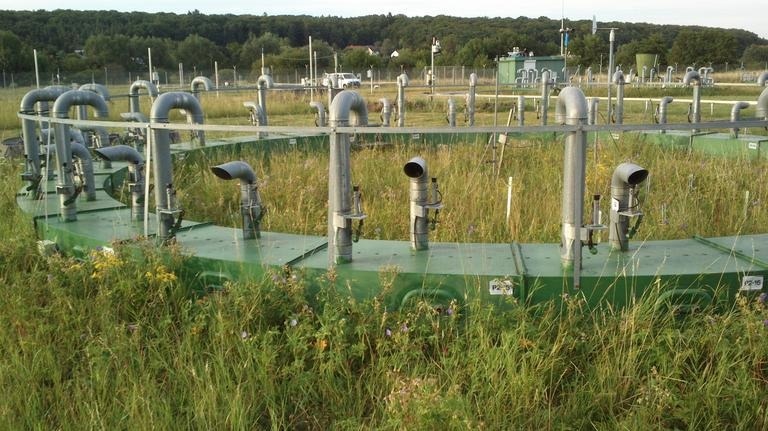Reviewed by Mila PereraSep 9 2022
Tree-planting has been extensively believed to be an effective approach to binding carbon as the levels of carbon dioxide (CO2 ) increase in the air.
 Test site where extra carbon dioxide is emitted to the air and the biomass growth is measured in the plants. Image Credit: Louise C Andresen.
Test site where extra carbon dioxide is emitted to the air and the biomass growth is measured in the plants. Image Credit: Louise C Andresen.
However, scientists from the University of Gothenburg, among other places, are cautioning that forests on nutrient-poor land will not be a supplementary carbon sink in the long term. As the age of forests progresses, their absorption of CO2 drops, and each time they are cultivated, there is a hazard of extra carbon being discharged from the soil.
The capacity of plants to trap carbon is the main factor in measuring the effects of climate change as CO2 levels increase in the air.
Researchers have currently calculated the amount of biomass growth under air with higher CO2 concentrations in numerous long-term field experiments. Growth stimulation was weak or non-existent when the plants grew in deficient soil, in some instances after just ten years.
The total biomass that binds carbon was not stimulated more by the elevated CO2 levels in our experiments over time. Exactly when growth slowed down depended on various factors, but one important one was how much nitrogen the soil contained.
Louise Andresen, Researcher, University of Gothenburg
A More Nuanced Picture
Other factors not considered earlier are that many trees die and thus stop trapping CO2. Instead, their carbon is discharged in advance. While there has been some discussion concerning the size of the forests’ capacity to alleviate the greenhouse effect in the past, this research, published in the respected journal Global Change Biology, offers a more distinct picture.
We now know that we humans can’t just silence our consciences by planting forests; in the long term it doesn’t actually help. The only thing that will help is for humanity to reduce its greenhouse gas emissions.
Louise Andresen, Researcher, University of Gothenburg
The team also cautions that the unnatural cultivation of trees can have significant negative effects. A tundra-like land or heath is a naturally good carbon sink. If machines are used to prepare the soil for cultivation, there is a high risk that the carbon trapped in the soil will be discharged into the air.
Level of Nitrogen in the Soil Crucial
Earlier, the predominant theory was that higher CO2 increased the growth of biomass, similar to the view that talking to plants would facilitate growth.
In outdoor tests in the US, Denmark, Switzerland, and other places, grasses, forests, and other vegetation were subjected to a controlled level of CO2 in the atmosphere, after which scientists calculated biomass growth. Where the soil had low levels of nitrogen, the scientists observed that the biomass did not increase after some years of growth.
That’s not great news, given that carbon dioxide levels in the Earth’s atmosphere have risen from 380 ppm to over 410 ppm in the last 20 years alone. After these very long experiments, we know more about how vegetation responds to elevated carbon dioxide levels. When you take the whole ecosystem, the soil’s fertility and the whole life cycle of the plant into account, many ecosystems do not increase the amount of carbon they bind.
Louise Andresen, Researcher, University of Gothenburg
Journal Reference:
Maschler, J., et al. (2022) Links across ecological scales: Plant biomass responses to elevated CO2. Global Change Biology. doi.org/10.1111/gcb.16351.